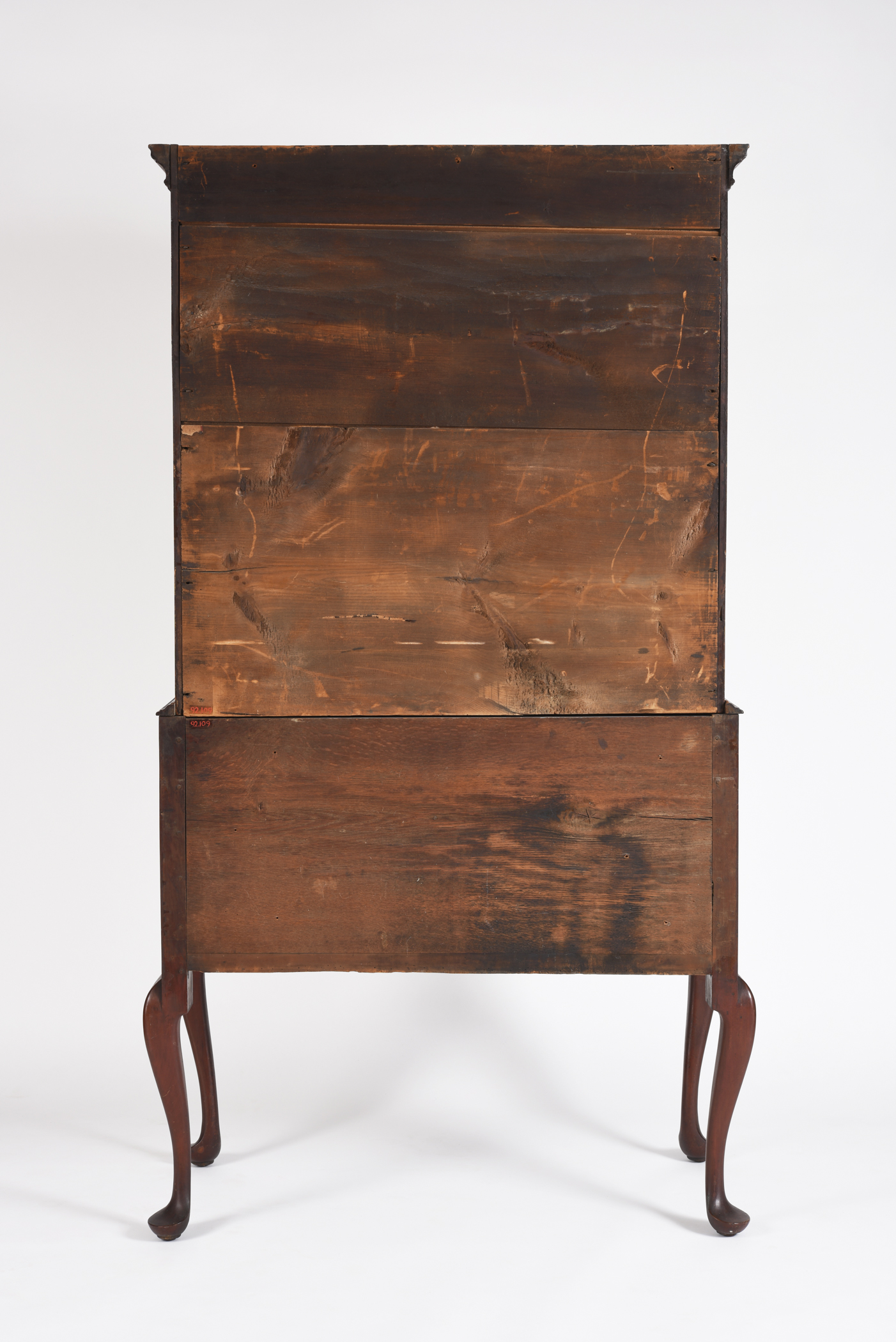Chest-on-Chest (1992.0109)
Katie Fitzgerald, WPAMC '19
This chest-on-chest is an excellent place to begin analyzing this Dominy form. Made of cherry and with a red-tinted varnish, it contains classic Dominy construction methods and decorative elements, from the flat molded top to the cabriole legs on pad feet. It epitomizes the aesthetic of “neat and plain,” replete with its simple cutout fleur-de-lis drop on the lower case. The primary wood is cherry, with tulip poplar, pine, and oak secondary woods. Despite the lack of provenance, the combination of features, finishes, and wood types clearly indicate that this chest-on-chest was made by Nathaniel Dominy V.
In account books of the Dominy shop, there are thirteen listings for chest-on-chests. All were made between 1791 and 1806 by Nathaniel Dominy V (1770-1852). The Dominys used an assortment of wood types ranging in value and quality from mahogany to pine; cherry was around the middle of this list. The thirteen chest-on-chests made by Nathaniel Dominy V cost between £12 and £7 12shillings 6pence.
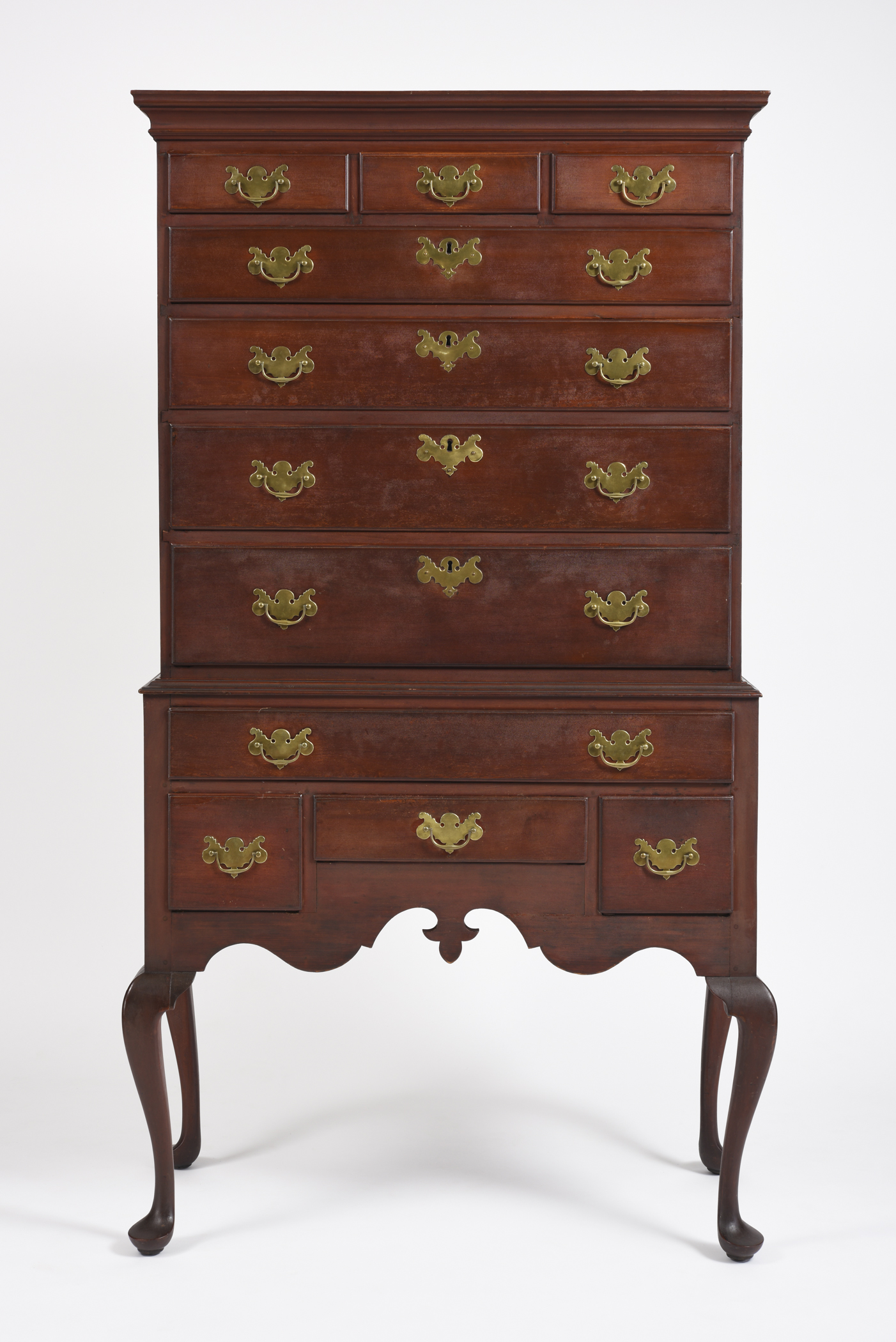

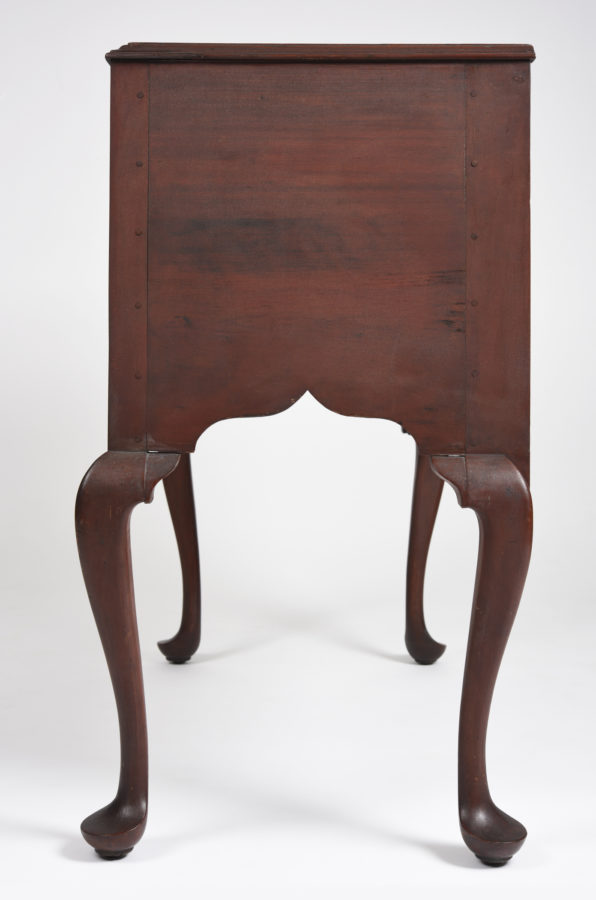
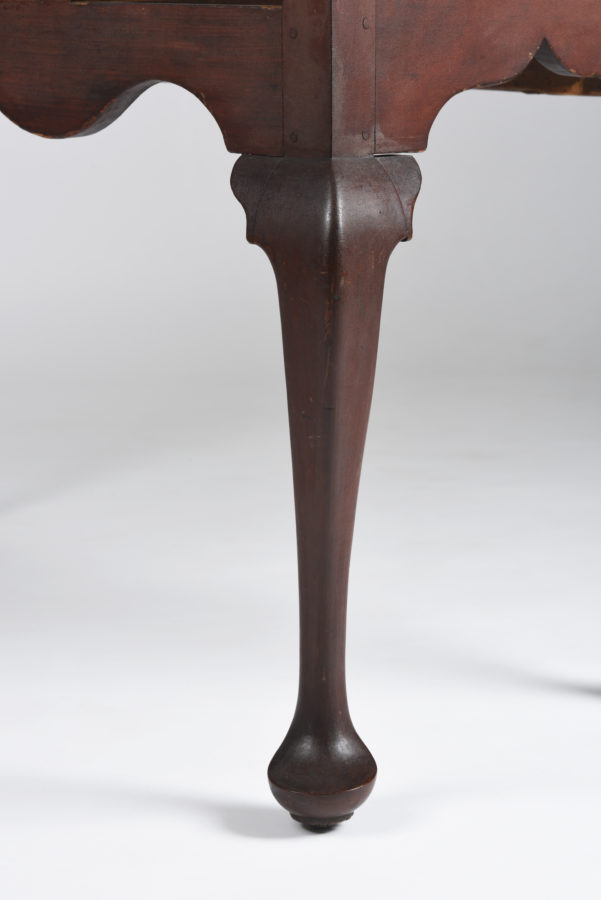
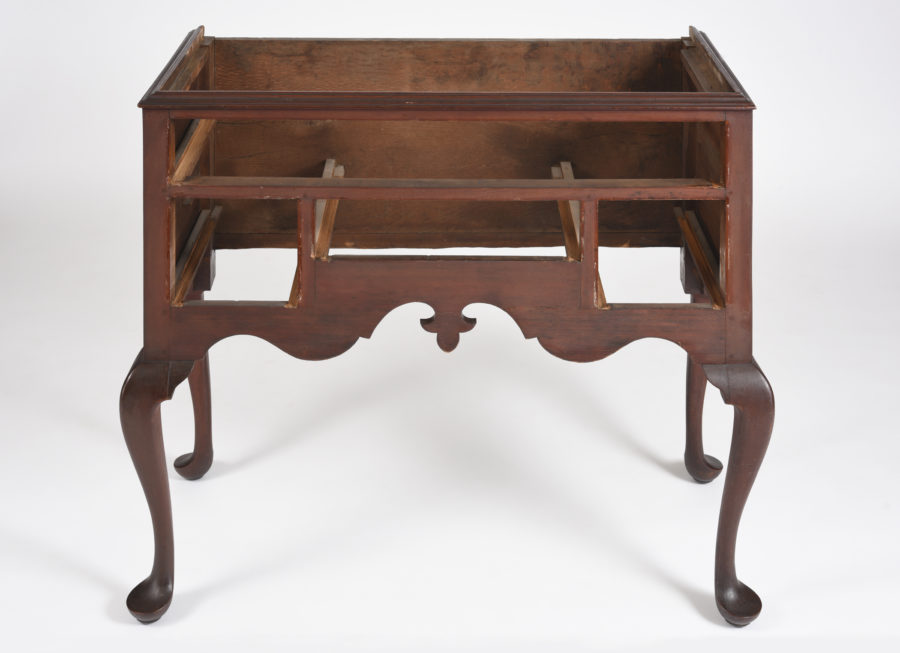

The drawer sides of this chest-on-chest are chamfered: angled and smoothed in such a way that does more than facilitate the drawer’s ability to slide easily in and out of the case. This form was most often used to store textiles—an 18th-century family’s most prized possession. Having chamfered sides like these would help prevent the precious cloth from getting snagged on splinters or jagged edges of the drawer itself



